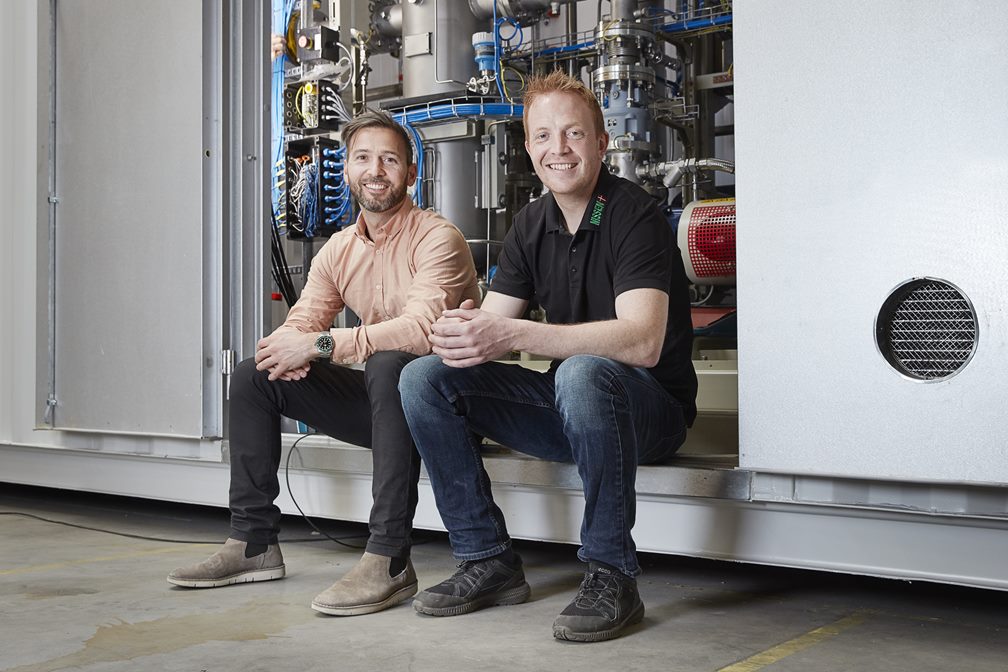
Armatec Denmark has delivered valves and actuators to an interesting project in Canada. A plug and play solution with Danish-developed technology that converts biogas into energy.
Right now, a special container is on its way from Denmark to a field on a cattle farmer's land in Canada. The container is a power plant filled with Danish-developed technology that works as a plug and play solution. In short, this solution utilizes the gas from the anaerobic digestion process of animal manure and other waste to generate energy in the form of upgraded biogas.
The container contains everything from control systems to process equipment and valves for various safety-related functions, making it ready for immediate use. "When the plant arrives, all you have to do is connect biogas, water and electricity. Then the plant delivers natural gas and heat," explains Rasmus Vind Ebbesen, COO of NISSEN Energy a/s.
The energy company is behind the container solution called a gas upgrading plant. This means that the biogas extracted from the anaerobic digestion process of animal manure is fed into the plant to separate carbon dioxide and methane, resulting in the production of purified natural gas (methane).
NISSEN Energy has chosen the Danish company Armatec as the supplier of the main valves in the tank, and this company has also contributed significant expertise to the project.

The valves are pneumatic and driven by air pressure. This type of valve reacts quickly and accurately, which is an important feature to prevent possible damage. "Just as a car cannot go from 100 km/h to 0 km/h instantly, the pressure in such a system must be precisely controlled. This means that some valves must close more slowly than others to prevent pressure surges back into the system," explains Jacob Hemicke, Product Manager at Armatec.
"To protect the membranes, we need a control system that can monitor whether we are working with the right pressure throughout the system," adds Hemicke.
Rasmus Vind Ebbesen describes the membrane as a long, hollow spaghetti tube with small holes along the sides of the tube.

The size of the holes makes it possible to remove carbon dioxide from the raw biogas. This is possible because methane molecules are significantly larger than carbon dioxide molecules. As the biogas passes through the pipe, the CO2 molecules come out through the small holes, while the pure methane gas comes out of the pipe at the end.
The CO2 can be captured for other purposes, while the methane is used in further processes. For this process to take place, a certain pressure is required. In this respect, the Armatec valves ensure that the gas is correctly directed into the NISSEN Energy compressor, which raises the pressure in the system to 16 bar. "Imagine trying to blow air through a long garden hose; you need a certain lung capacity. It's the same principle here," explains Rasmus Vind Ebbesen.
The biogas entering the tank can come from animal manure, sewage and food waste. In short, the process involves placing the waste products in a digestion plant where biogas is produced. The biogas, redirected by Armatec valves, then passes through a gas treatment plant designed and manufactured by NISSEN Energy. The plant consists of activated carbon filters that remove contaminants.

Sulphur is very harmful to both the compressor and the sensitive membranes where CO2 is separated from methane. This process is repeated and continues until the gas is clean enough to be sent to the upgrading plant. The advanced Armatec valves are monitored by the plant's system control and together with pressure and flow measurements, the farmer is alerted to abnormal operation or faults in the system.
In addition, the plant can be continuously monitored via the Internet by NISSEN Energy. "But it doesn't require an operator to sit and watch a screen. If all parameters are in order, the system takes care of itself," says Rasmus Vind Ebbesen.
Find out how sustainable flow technology can make a difference in your project.
Reach out to us